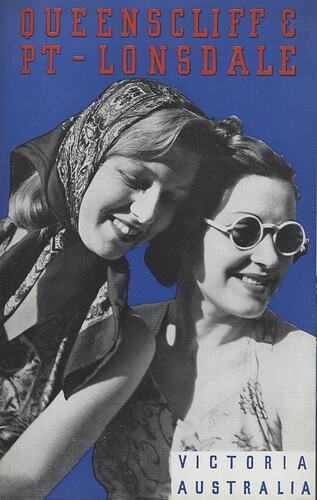Queenscliff is a township at the western entrance to Port Phillip Bay. It is connected by an isthmus to the Bellarine Peninsula on the west side of Port Phillip Bay, and overlooks the entrance to the Bay. Originally called Whale Head, it was re-named Shortland's Bluff in 1837 by Lieut. Thos Symons after Peter Frederick Shortlandds, Master Gunner on the ship HMS Rattlesnake, which was surveying Port Phillip Bay. In the early 1840s a pilot service for ships was set up at Queenscliff. In 1853 Lt. Governor C. J. La Trobe decided that a more dignified name was needed, reflecting a less obscure person, and chose the name Queenscliff after Queen Victoria.
A local fishing industry was established early in the history of Queenscliff, utilising access to both the Bay and to Bass Strait. By 1856 a telegraph station was built, and in 1863 a municipal borough was created, including Point Lonsdale.
In the early 1860s lighthouses were erected at Shortland's Bluff, at a point 300 metres north-north-east and at Point Lonsdale. The first two allowed ships to fix their positions as they came though the dangerous rip. Fort Queenscliff was later built between these lighthouses (1884-5) as part of a defensive network of armed stations guarding the entrance to Port Phillip.
Around the same time several other institutions were founded: a Queenscliff detachment of the Geelong Volunteer Artillery and rifle Corps. Presbyterian, Anglican, Catholic and Wesleyan churches were opened between 1862 and 1869, and by 1875 four hotels and the large Foresters Hall were open. The railway was extended from Geelong in 1879, and during the next decade Queenscliff's grand hotels were built as the town developed as a seaside retreat. A gas works was opened in 1884. By 1891 Queenscliff had 2,000 residents.
By the turn of the century Queenscliff was a well established holiday resort, reached by railway of Bay steamer. In the inter-war and postwar years Queenscliff's importance for tourists and holiday-makers declined due to the increasing use of cars, which allowed easy access to other destinations. Maintenance standards and property values in Queenscliff declined. However, the community continued to develop its facilities, and a higher elementary school (1945) became a high school in 1957. The population also gradually increased, and by 1947 2,386 people lived in the seaside town.
In the 1980s the tourism and civic infrastructure saw a revival, in part due to appreciation for the historic architecture and proximity to metropolitan Melbourne for day trips. Passenger and vehicular ferry services also connect to Sorrento today, registered historic buildings include pilots' cottages (1853), a lifeboat shed (1887) and the railway station (1881), but not the hotels. In 1996 3,193 people lived in Queenscliff.
The Borough of Queenscliff was unaltered by the 1994 local government amalgamations, a striking exception to the rest of Victoria.
References:
Australian Places website, Monash University, http://arts.monash.edu/ncas/multimedia/gazetteer/list/queenscliff.html
More Information
-
Keywords
-
Localities
-
Authors
-
Article types
